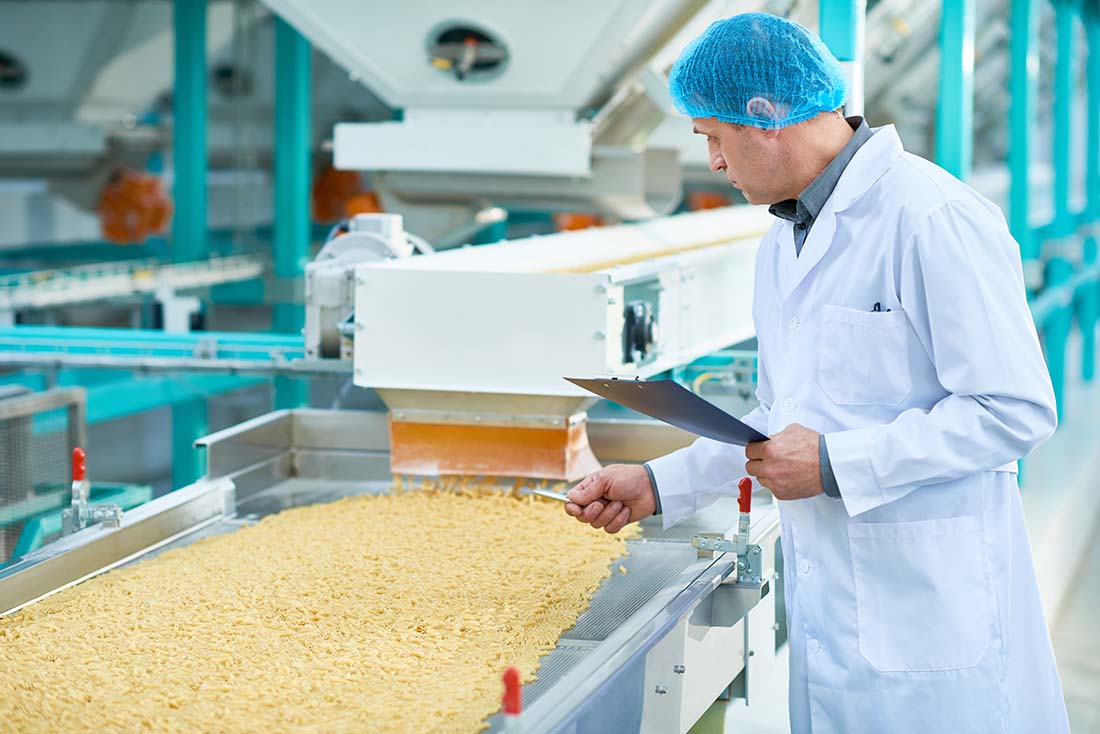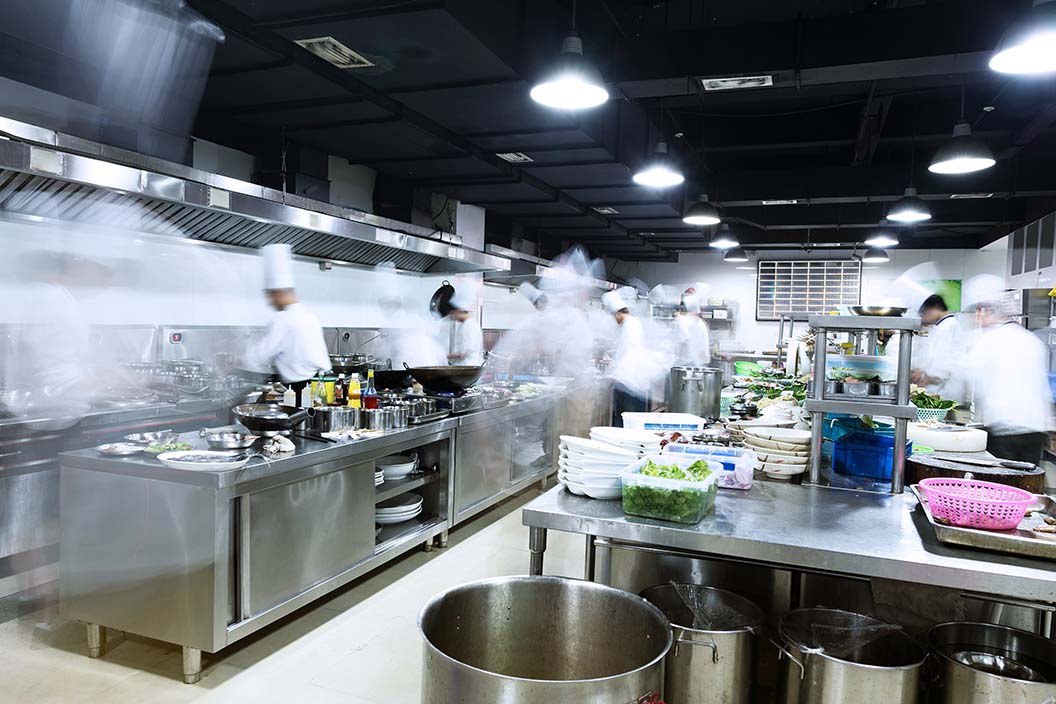How To Control Pests In The Food Industry
Pests are a problem no matter where they occur, arguably they are even worse in the food industry. If as a business involved in the preparation or manufacture of food you are found to have an infestation, the repercussions can be very serious. At the very least think of the reputational damage and the resultant loss of business, which could ultimately lead your business to fail. Controlling pests in the food industry is a really important part of ensuring the food that is produced is fit for human consumption. Under the Food Safety Act 1990 and the Food Safety and Hygiene (England) Regulations 2013, you could be fined or imprisoned for serious breaches.
So where do you start in controlling pests in your food premises?
The first step is always prevention. As they say, prevention is better than cure, so stopping an infestation of pests from happening in the first place is your first port of call.
Food Safety systems and processes
Food safety and controlling pests begins with the right systems and processes. This starts with the Hazard Analysis and Critical Control Point (HACCP) system. As part of the HACCP system Good Manufacturing practice (GMP) should be implemented. For those who want to go that one step further then seeking and gaining accreditation to ISO22000 or other recognised audit standards is also a good step. What does this all mean though?
What is HACCP?
HACCP involves looking closely at your business and working out what could go wrong, analysing the critical control points, these are the points of your process, e.g. accepting food deliveries, process layout, entry and exit points, cleanliness and waste handling where something fundamental could go wrong. Once these critical control points have been identified, robust procedures and policies need to be put into place to avoid, remove or reduce the risk. As part of these procedures there needs to be clear guidance on what the control measure is, what the limits of the control are, what to do if something goes wrong and auditing and inspection of the control points. The latter part is important as any food processing premises will need to be able to clearly demonstrate that their system is working. Staff will then need to be clearly trained on the hazards, the control points, the limits and the procedures to follow should something go wrong. It is important that all of this is clearly documented from the procedures, the controls and any actions taken to rectify identified issues.

What is GMP in the Food Industry?
Good manufacturing practice is a part of the HACCP process and it is essentially the operational aspects that ensure food is prepared safely. It is sometimes referred to as ‘prerequisites’. GMP will cover the following aspects:
- Construction and layout of the premises to ensure that there are limited areas for food build up, that food storage areas are clean and that flows of food throughout the premises don’t lead to mess. Also, the layout needs to ensure that comfortable habitats for pests are avoided.
- The external environment of the premises is suitable. This means no build up of food waste, cleanliness in the external areas to avoid attracting pests.
- Suitable use of chemicals, including pest control chemicals.
- Waste bins are properly labelled, segregated and secured.
- The premises are regularly cleaned according to a suitable schedule.
- Implementing a pest control program.
- Avoiding foreign matter in foodstuffs, this can include pests.
GMP also needs to be fully documented with SOPs, inspection reports, training documentation and corrective actions.
What is ISO22000?
ISO22000 is the food safety management standard which compliments HACCP and is based on the following basic principles:
- Interactive communication
- HACCP principles
- System management
- GMP, Good Hygiene practices and good agricultural practices.
Looking at this guidance, in summary, to set up a food hygiene system a food business operator will need to sort the following: Nominate a responsible and qualified person to implement and oversee the system, design and implement the right procedures based on the HACCP plan, train staff appropriately, monitor and record all control points, verify and audit the process regularly and finally, document the system, training, inspections, audits and corrective actions.
What does a food safety management system cover?
A robust and integrated system will cover all of the following aspects.
The location and design of the premises and the internal and external layouts are key to pest prevention. Consideration should be made for ease of cleaning, ease of maintenance, safe storage and suitable drainage. Structural aspects such as roofs, ceilings, pipes, cabling and lighting should all be designed to avoid the build up of dirt and condensation but they should also be sealed to prevent pests from accessing the premises. The whole point around the design is to avoid attracting pests in the first place and to keep them firmly out of the premises.
As far as preventing access is concerned, all gaps should be filled or proofed, and fly screens should be used on windows or doors which need to be open.
Cleanliness both internally and externally is important. Food should not be allowed to accumulate in any areas, all utensils and surfaces should be kept clean at all times and waste should be disposed of quickly and securely. Standing water should not be allowed to accumulate. Food should be stored in pest proof containers where possible and externally debris and vegetation should be cleared away.
An integrated pest management system is also needed. If you have all the relevant HACCP and GMP procedures and processes the final piece of the puzzle is to monitor for and control pests that do arrive at your premises. As part of this, the use of a competent pest control contractor will be vital. They have a range of tools and techniques to identify and eliminate all pests and give an indication as to the extent of the problem. The system should ensure that any pest issues, no matter how small are documented, investigated and corrective actions put in place to prevent a recurrence. It is important to note that any pesticides used on the premises are stored and used safely to ensure that they cannot contaminate food.

In summary pest control in the food industry focuses on the analysis of the hazards and risks, determining and implementing critical control points and procedures for control, documenting food hygiene procedures and policies, ensuring that there are competent and responsible people on the premises, training the staff in the practices and procedures, inspecting and auditing the whole process and documenting it all robustly.
Food Industry Pest Control
iX5 Pest Control offers pest control services for businesses in Northampton, Daventry, Rugby, Market Harborough, Towcester, Brackley, Wellingborough, Kettering, Corby, Olney and all of the surrounding areas. Our team of pest control specialists are available both evenings and weekends at no extra cost. Should you require assistance then call us on 01604 328545, email [email protected] or use our simple contact form.

